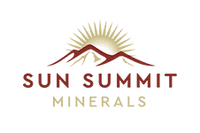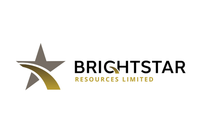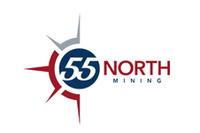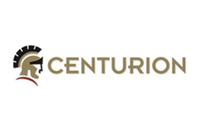#DisruptMining Winner Wants to Make Drilling Smarter
Acoustic Zoom’s Jacques Yves Guigné discusses what was appealing about the #DisruptMining contest, what the company plans to do with the funds it won and how its technology will revolutionize mining.
During this year’s Prospectors and Developers Association of Canada conference, Goldcorp (TSX:G,NYSE:GG) held its second annual #DisruptMining contest, a competition aimed at accelerating mining innovation.
At the end of the event, geophysics company Acoustic Zoom walked away with the prize: the chance to negotiate a contract or investment of up to US$1 million with Goldcorp.
The Investing News Network (INN) spoke with Professor Jacques Yves Guigné, Acoustic Zoom’s CEO and chief scientist, after the company closed a deal for US$1 million with Goldcorp last week. He addressed the state of the mining industry and how his company hopes to use its technology to positively affect the drilling process to make mining more convenient and cost effective.
“In mining, you’re dealing with vertical features related to mineralization, veins and dikes and distributed kind of structures, bulks, micro-fissures, pockets that are discontinuous or bodies that are not necessarily simple to resolve but chaotic — and that’s what we can capture,” Guigné said.
“Our physics is all related to picking up that defused energy that comes off such formations and features. And so what we’ve evolved in the last two to three years is the methodology that actually enhances the value of drilling,” he added. Read on for the full interview with Guigné.
INN: Can you tell me a little bit about Acoustic Zoom as a company as well as the technology you’ve developed?
JYG: Acoustic Zoom is actually an advanced geophysical company and it has a team of about 10 physicists, mathematicians, geophysicists [and] geologists. We have a long history of innovation starting from our original parent company called PanGeo Subsea. The company evolved into Acoustic Zoom because our work started to look into the Earth and look at the way fractures that are really important to characterize geology could be actually imaged. In 2012 we became our own company; our IP was transferred to the company and we’re independent from our parent company.
But our mandate is really to do what seismic cannot do, and that is that we’re not so much interested in looking at the layer in terms of the Earth’s geology, but what actually comes to the geology — and that’s where mining comes into play. In mining you’re dealing with vertical features related to mineralization, veins and dikes and distributed kind of structures, bulks, micro-fissures, pockets that are discontinuous or bodies that are not necessarily simple to resolve but chaotic — and that’s what we can capture.
Our physics is all related to picking up that defused energy that comes off such formation and features. And so what we’ve evolved in the last two to three years is the methodology that actually enhances the value of drilling. We look at what constitutes drilling such as getting us a real sample, and we recognize that that sample is a really good measure because in the sample you can get these physical properties and find a particular mineral, an indicator of value, but it’s only 7 centimeters in diameters so it doesn’t really represent the resource, it doesn’t say anything special and it’s a hidden net.
In trying to enhance the confidence in the resource, you go from inferring to indicating to measuring, but your measurement is relying on a lot of drill holes and the drill holes are kind of hidden in — they form a pattern and they’re always trying to get a dense network, but you’re trying to understand from 7-centimeter-diameter samples what the geology is.
So where we come in is that we provide a means for a contact around that sample, directly to the sample of interest. We use the drill hole, we collocate in the drill hole very dense centers, a whole bunch of receivers and then our transmitter is at the surface and we move the transmitter gently around that hole or drill hole and we create a 200-meter diameter called a virtual — so you can imagine going from a 7-centimeter diameter to a 200-meter diameter.
Now, you’re putting the geology in context, you’re linking it directly to the sample and you can start to say something new about the resource, putting more confidence in the measurements of the resource, hopefully leading to better drilling so you can directly drill in a smart way. Using smart drilling with acoustic imaging you have better use of the drilling that is invested, and that typically leads to a much better understanding of the reserve that could evolve from the resource that has been identified.
INN: With this technology and what you are doing, can you tell me a little bit about how you’re hoping to shape or change the mining industry?
JYG: Yes, it’s all to do with the investments. Typically investment goes in into drilling because you want to get a better handle on potential for another body or a mineral body, and that is linked to how profitable it could be. But how do you do that? You have to go back and you have to measure, so how do you measure? What tools do you have? And the tools tend to fall heavily on drilling and using the extensive drilling. Our … technology — you can look at it as being a revolution, is to be able to augment the value of the drilling.
So, we’re coming in not to displace drilling, but to make it smarter. And to make it smarter using imaging of very high resolution, unprecedented. And we’re looking at factoring the features that typically cannot be seen in the geology and bringing [them] back in a correlated matter to the sample of interest, the mineral that has been identified in the drilling. By working in depth with the drilling program, we [can direct drilling]. So we’re maximizing the investment. It all comes back to confidence.
If you have a whole series of samples that you collected and you’re trying to create a geological model from it and it’s a bit chaotic, what does it really mean? And how much confidence can you place in the resource that you’re inferring? And the answer is drill some more. In our case, you turn around and then you say, “that drill hole, that sample which is so exciting, by the way is tied to a particular vein that is running perpendicular to the drill hole or at a particular inclination.” So now you drill directly towards that vein and you build up your geological model with a lot more confidence, with a lot better measurements, which then tells you if you have a profitable — potentially a profitable mine. That’s the revolution. That’s why it’s exciting.
INN: Switching gears, what intrigued you to enter the #DisruptMining contest.
JYG: It came about because I’ve been working quite a bit in the oil and gas sector and it crossed over into the mining sector, and then I realized that the geology that’s being tackled is actually being tackled with very rudimentary tools. And that a lot of investment is coming in and it’s oftentimes based on hope.
You know, someone has prospected and say, “hey, I’ve found an indicator,” but there could be a valuable mineral — let’s say gold. A trace of gold is present or some type of formation, mineralization that’s indicative that there could be gold and then they start to put money into drilling, but it is really trial and error, and oftentimes brute strength and … into these contexts, those days are over.
We’re talking about deeper minds, following the vein much deeper, much higher safety, more concern for the environment. So the only way to tackle that is by … innovation. Better tools, better safety procedures, better understanding of the environment that you’re working in and navigating the footprints that you’re entering into.
Our technology, our methodology and intellectual property and the ability to manipulate sound waves and to create those images, is really in the forward front of a gentle, but very smart way to tackle upfront the exploration as needed. Stats is what the investors who are taking the risk need to see, and to do it quick enough that there’s a return for further planning.
INN: What do you as a company hope to do with the funds?
JYG: It’s actually not so much the prize that is the real prize, it is the relationship with Goldcorp. Goldcorp is a very mature prime mining company worldwide and it has a very innovative streak in it, and it is certainly attempting to make changes on the way exploration and value of a mine takes place. It’s influential and that’s allowed us to have a point. So that is the true prize.
INN: Beyond the competition, do you have any other exciting news you can share in terms of projects or companies that you’re working with or will be working with?
JYG: We’re now starting to look at several projects worldwide with other companies, and we’ll call it from junior mining companies right to through very mature international mining firms. What is exciting is the relationships that we’re forming are becoming partnerships and when you’re talking about innovation, you can’t do it in isolation. It has to be through partnerships.
You need to be able to get out of the mode of contractor and client relationships into a partnership of using the best resources and the best teams, the best kind of approach. And that means that every site that we look at we actually enter in, we scout with the client, we form this partnership with their geologist, we start to understand what the requirements are and we adapt our technology and our innovation in approach to the best in the site.
Don’t forget to follow us @INN_Resource for real-time updates!
Securities Disclosure: I, Nicole Rashotte, hold no direct investment interest in any company mentioned in this article.
Editorial Disclosure: The Investing News Network does not guarantee the accuracy or thoroughness of the information reported in contributed article. The opinions expressed in these interviews do not reflect the opinions of the Investing News Network and do not constitute investment advice. All readers are encouraged to perform their own due diligence.




